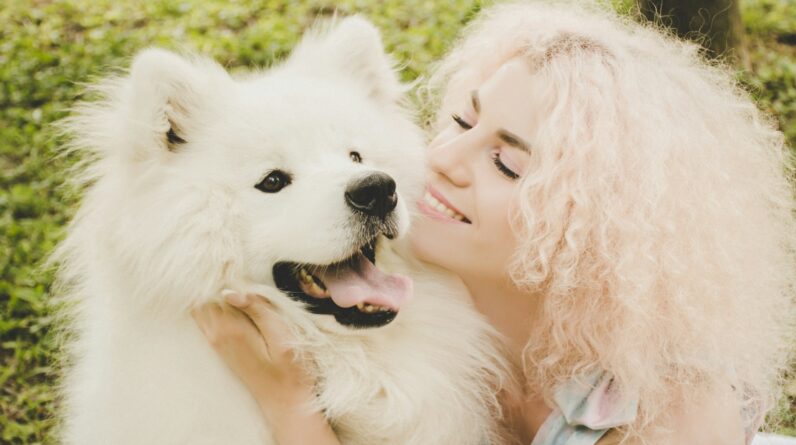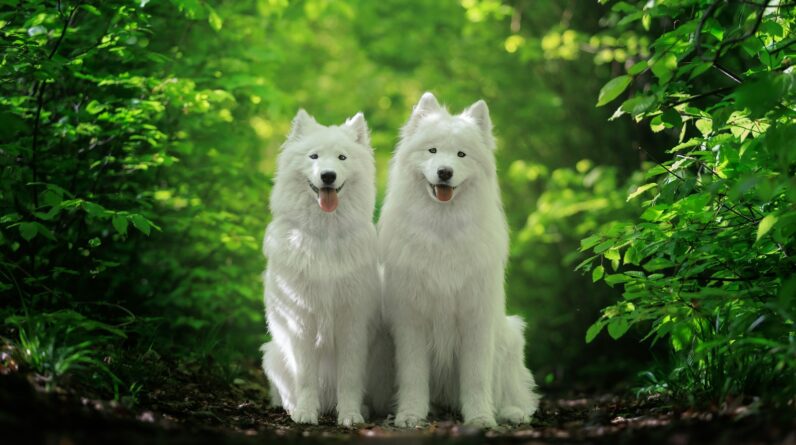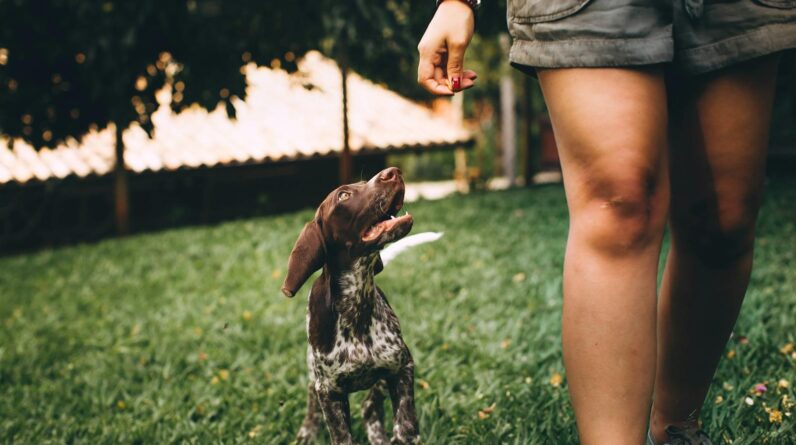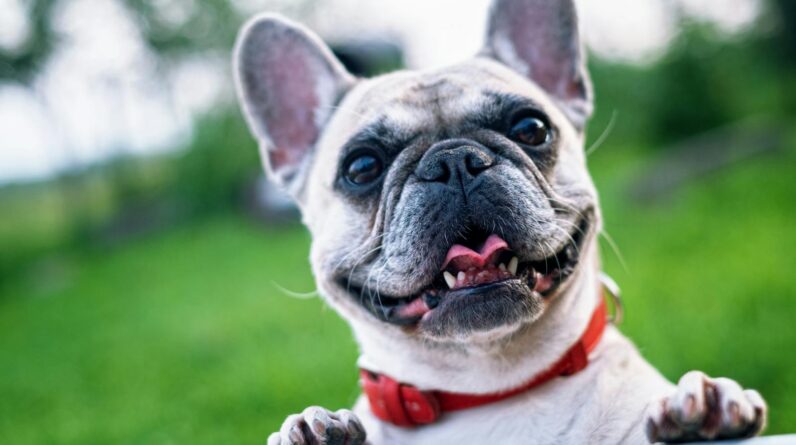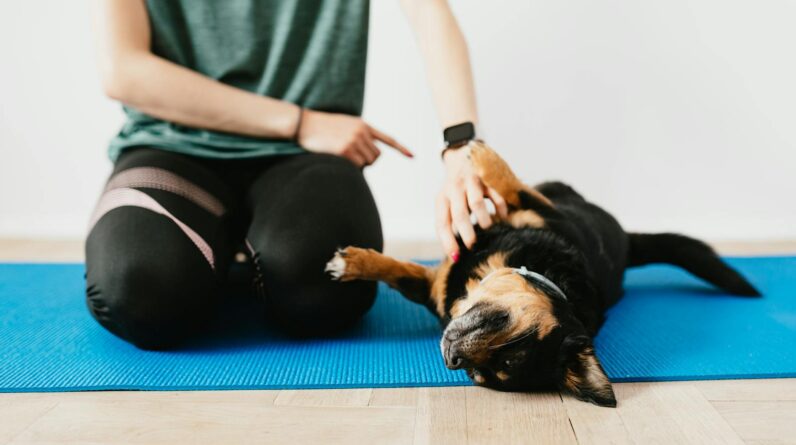
Let’s Talk Dog!
Hey there friends! Have you ever seen your dog do something and wondered, “What’s up with that?” Dogs don’t talk like we do, but they tell us how they feel using their bodies. Let’s learn how to understand what our furry pals are saying!
Happy Tails Tell Tales
Ever see a dog with a wagging tail? Sure, it can mean they’re happy, but not always. If the tail’s up high and wagging fast, they’re super excited. But if the tail’s low and slow, they might be nervous or chill. Watch the tail; it’s like reading a mood ring!
Eyes – The Windows to the Woof
The eyes can spill the beans on what your dog’s thinking. When their eyes are normal, that’s a good sign. But if their eyes get big and round like saucers, that can mean they’re surprised or a bit scared. And if they show you the whites of their eyes, like a half moon—yikes! They might be really worried or stressed.
Ear Talk
Dogs have super cool ears that move around to show how they’re feeling. When their ears are up and forward, they’re saying, “Hey, what’s that?” They’re curious or on alert. If the ears are flat back, that could be a doggy’s way of saying they’re scared or might want to be left alone. So, no surprise hugs, please!
Mouth Matters
When a dog’s mouth is open and their tongue’s out, they’re probably pretty happy or just hot. But if they’re panting super fast, it might mean they’re stressed or in pain. And here’s something cool: if you see a doggy ‘smiling’ with a closed mouth and the corners pulled back, that’s often a friendly hello!
Standing Up Straight—or Not
How your dog stands tells you something too. If they’re standing tall, with their chest puffed out, they’re feeling confident or in charge. But if they’re crouching down or rolling on their back, they might be saying they’re not looking for trouble and just want to be pals.
Leaning In or Out
When dogs lean into you, they’re giving you a furry hug. It means “I love you” or “I feel safe with you.” If they lean away or try to move back from something, it’s their way of saying “I’m not so sure about this.”
The Tale of a Dog’s Tail
Now, back to the tail for a second because tails are super chatty. If your dog’s tail is stiff and moving like a robot, it’s a sign they’re really focused or might be getting irritated. And a tucked tail? That’s kind of like a dog saying they’re not feeling too brave.
Play Bows and Zoomies
Have you ever seen your dog bend their front legs, stick their butt in the air, and wag their tail? That’s a play bow! It’s like getting an invitation to a game of catch or chase. Sometimes dogs get the zoomies, where they run around like crazy! That’s just dog speak for “Woohoo, this is awesome!”
Growls, Barks, and Whines
Yep, these sounds are part of body language too. Growls can be a keep-away sign or just playing—depends on the situation. Barking? Oh, that could mean loads of things! They might be saying “Hey! Pay attention!” or “Someone’s at the door!” Whining is what dogs do when they need something, like a bathroom break or they’re just super sad you’re leaving for school.
What to Do With This Info?
Now you know a bit more about doggy body talk. Watch your pup closely, and you’ll start to understand more and more. Remember, each dog is different, like people, so they have their own ways of saying things.
Understanding your dog’s body language is pretty cool because it helps you be an awesome pet friend. You’ll know when they’re up for playing, when they need a break, and how to help them when they’re not feeling great. So keep an eye out and you’ll soon be like a dog whisperer, knowing just what your dog wants to tell you – without them saying a single word.
What does it mean when my dog wags its tail?
A wagging tail is often a sign of a happy dog, but not always. Look at the wag’s speed and the dog’s overall body language. A fast wag combined with relaxed body means they’re probably excited. If the wag is slow and the body stiff, they could be apprehensive.
It also matters how high their tail is. A high wag can be a sign of confidence, while a lower wag might indicate submission or uncertainty. Notice their context and other body cues to get the full picture of how your buddy feels.
How can I tell if my dog is scared or anxious?
If a dog is scared, they might tuck their tail, lower their body, and avoid eye contact. They could also lick their lips, yawn, or show the whites of their eyes, which is called whale eye. These signs mean your dog is not comfortable and needs some space.
They might also pace or try to hide behind you or an object. Sometimes, a scared dog’s fur will stand up on their back. Approach them calmly and give them time to relax. Avoid forcing interaction to help them feel safe again.
Can I understand if my dog feels aggressive through body language?
Yes, a dog often shows aggression through their body language. An aggressive dog might have a stiff posture, raised hackles, a fixed stare, and might show their teeth or growl. They are giving a clear warning to back off.
If you notice these signs, it is crucial to remain calm and give the dog space. Avoid eye contact, which they can see as a challenge. It’s important to stay safe and seek help from a professional if aggressive behavior is frequent or concerns you.
Why does my dog roll over on its back?
When your dog rolls over on their back, they might be asking for belly rubs because they trust you and feel comfortable. It’s a vulnerable position, so it’s a good sign they feel safe around you. Time for some petting!
However, in the presence of another dog or in a new environment, rolling over can also be a submission signal. It’s like saying “I’m no threat.” Always judge by the context and what else is going on around them.
What are signs that my dog is happy and relaxed?
A relaxed dog usually has a soft, open facial expression with their mouth slightly open, like they’re smiling. Their eyes are normal shaped, not squinty or wide open. A loose, wagging tail usually goes with this happy doggy look.
They’ll also have a relaxed posture, possibly lying down or sitting with a calm demeanor. If they’re up and moving, their movement is smooth, not jerky. A relaxed dog is often a quiet dog, not whining or barking much. Enjoy these peaceful moments with your pup!
Key Takeaways
- Understanding the tail: A wagging tail doesn’t always mean a dog is happy. The tail’s position and movement can vary—up high may show confidence, while tucked under could indicate fear.
- Ear positions speak volumes: Ears up and forward could mean your dog is engaged and alert, while ears back might suggest your dog is being friendly or, if flat back, possibly showing fear or aggression.
- Eye expressions tell a story: Relaxed eyes signal a calm dog, but a hard stare can be a challenge or threat. Watch out for the “whale eye” where you see the whites, as it often shows stress or anxiety.
- Mouth and facial cues: An open, relaxed mouth can mean your pooch is chill, but a closed mouth could signal tension. A yawn may signify stress, not just tiredness, and lip licking could be a sign of nervousness.
- Posture matters: A straight, stiff stance often means your dog is alert and possibly aggressive, whereas a lowered body with a wagging tail can be an invitation to play. A dog that rolls over showing its belly is either feeling submissive or asking for belly rubs.
- Recognizing playfulness vs. aggression: Happy dogs may have a bouncy stance and a relaxed, open mouth. In contrast, an aggressive dog may stare intensely, growl, and have its hackles raised. Knowing this can prevent misunderstandings.
- Beware of stress signals: Pacing, whining, or excessive grooming might be signs your dog is under stress. Paying attention to these cues can help you provide comfort when your dog needs it.
- Body blocking and spatial awareness: Sometimes dogs use their body to communicate, like standing in front of you to block your path might be their way of asking for attention or signaling they want something.
- Each dog is different: Just like people, dogs have unique personalities and may express their emotions differently. Spending time and being observant helps you learn your own dog’s specific body language cues.
Final Thoughts
Decoding your dog’s body language is all about noticing the tell-tale signs. Happy pups wag their tails, have relaxed bodies, and often sport a goofy, open-mouthed grin. Nervous or scared dogs might tuck their tails, pin their ears back, and even avoid eye contact. Understanding these cues is key to supporting your furry friend through all their emotions.
Remember, when a dog feels threatened, they may growl or bare their teeth. On the flip side, a playful bow means they’re ready for a game of fetch or a romp in the park. Keep an eye on their posture and pay attention to their barks and whines—they’re trying to tell you something. The more you tune in to these non-verbal messages, the tighter your bond with your pooch will become.



